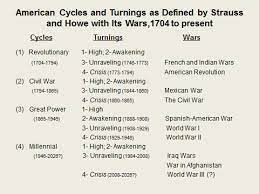Originally published at: https://integrallife.com/corona-climate-and-crashes-welcome-to-the-transformation-age/
Robb Smith and Corey deVos explore the rising disruption caused by a brand new set of global life conditions emerging across the planet, why only an integral sensibility is capable of managing these many challenges and crises, and how we can begin to cultivate the inner resilience and anti-fragility we need in order to endure and even thrive in the midst of extreme volatility.
If you can, please interview George Friedman (of Geopolitical Futures). He has a new book “The Storm Before the Calm” which has a key insight lacking in your analysis. He identifies two cycles: a socioeconomic one and an institutional one. He predicts that the institutional cycle (begun after WWII) will end in 2028 or 2032 and the next institutional cycle will be defined by a new relationship of the government with itself. The fundamental problem solved in the next cycle is the ability of intentions to efficiently flow through a system which currently is not possible due to over-reliance on narrow expertise. (The socioeconomic cycle will begin anew starting in 2020 and will include those left behind by neoliberalism.) What Robb misses in his analysis is the institutional cycle and the reason why government doesn’t work anymore (and why we don’t win wars anymore) due to the fragmentation of intention (a break between UL and UR in Wilber’s jargon). What George Friedman doesn’t get is development. It would be very interesting to integrate all of this: the economic cycle (1870, 1930, 1980, 2020), the institutional cycle (1780, 1860, 1940, 20XX), generational change (Missionary, Greatest, Silent, Boomer, GenX, Millennial, GenZ, Gen Alpha), cultural evolution (egocentric, ethnocentric, worldcentric which is correlated with neoliberal, kosmocentric etc.) and developmental levels.
Do these institutional and socieconomic cycles correspond with or parallel Strauss and Howe’s Generation Theory and 4th Turning cycles?
Four turnings comprise a full cycle of about 80 to 90 years, or the length of one long human life. The Romans named this length of time the saeculum , meaning both “a long human life” and “a natural century.” In Generations (https://www.lifecourse.com/about/method/timelines/generations.html), Strauss and Howe trace seven Saecula in Anglo-American history going back to the late 15th century
Each of the four turnings comes with its own identifiable mood, recurring over the centuries, from one saeculum to the next. We can think of these turnings as the seasons of history: At one extreme is the winter or “Crisis,” a period marked by major secular upheaval, when society focuses on reorganizing the outer world of institutions and public behavior. At the other extreme is the summer or “Awakening,” a period marked by cultural or religious renewal, when society focuses on changing the inner world of values and private behavior. Both of these are defining eras in which people observe that historic events are radically altering their social environment. During Crises, great peril provokes a societal consensus, an ethic of personal sacrifice, and strong institutional order. During Awakenings, an ethic of individualism emerges, and the institutional order is attacked by new social ideas and spiritual agendas. Between the Crisis and Awakening are transitional seasons, similar to Spring and Fall.
